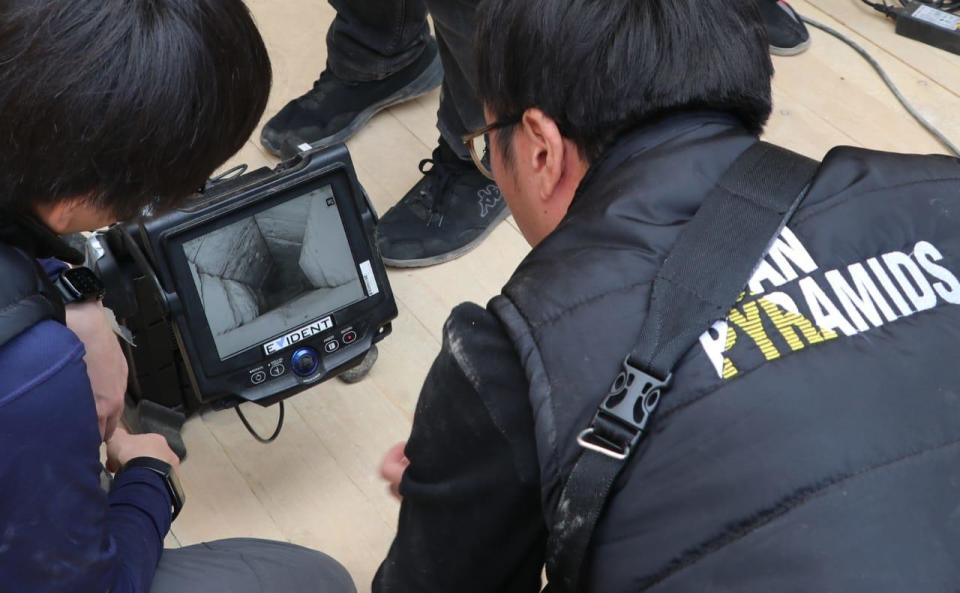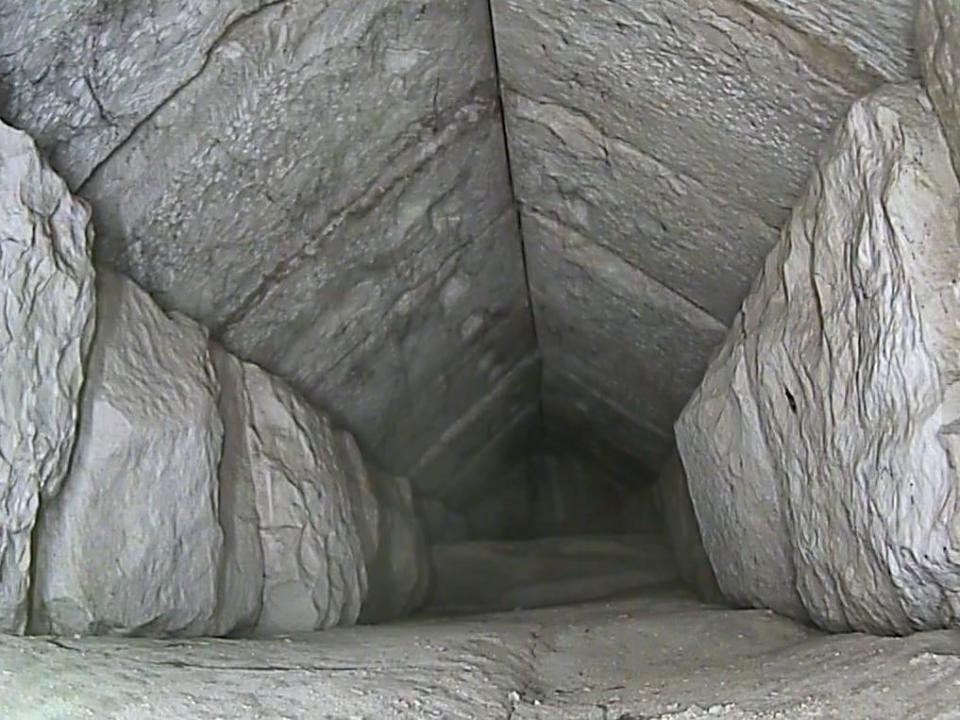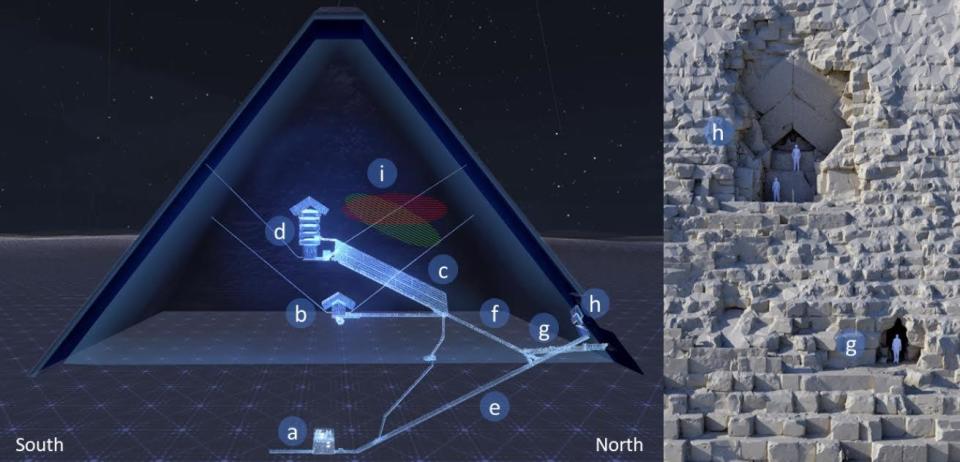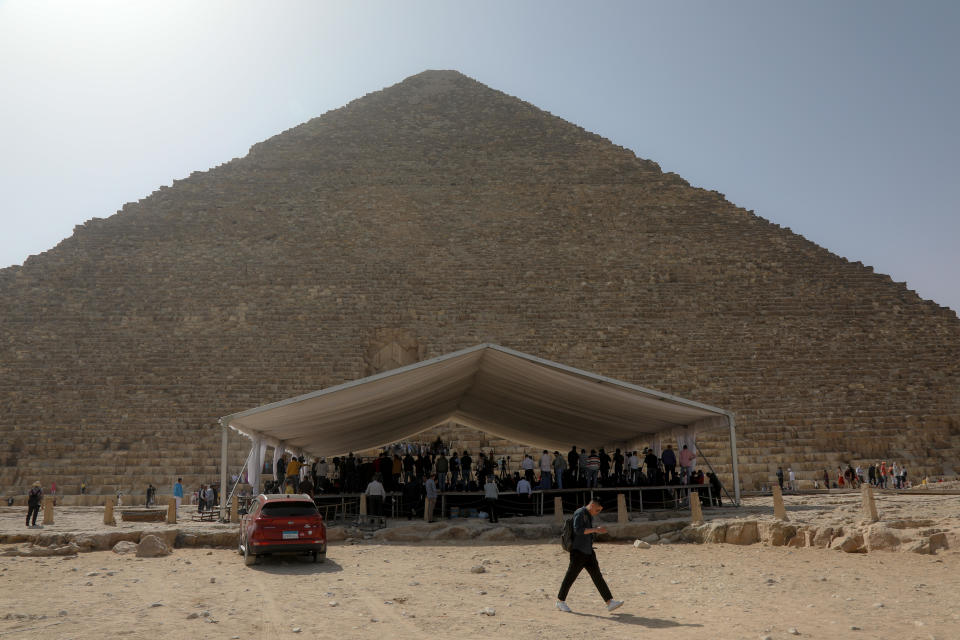Cosmic rays reveal corridor hidden in Egypt's Great Pyramid of Giza
Cairo — A team of archaeologists and other scientists in Egypt have used cutting-edge technology that relies on rays of radiation from space to get a clear picture of a 30-foot-long corridor inside the Great Pyramid of Giza, which remains hidden behind a main entrance to the ancient structure. The announcement Thursday was the result of the "ScanPyramids" project, launched in 2015, which uses cosmic-ray muon radiography to peer inside sealed-off structures.

In this case, that structure was King Khufu's Pyramid, built more than 4,500 years ago.
The team behind the research, which was published Thursday in the journal Nature Communications, first announced the discovery of a long, mysterious open space, and a separate "big void" within the pyramid's internal structure in 2017, but they left Egyptologists guessing as to exactly what they were or what they looked like.
Using the advanced technique, which "detects cosmic radiation passing through the pyramid, allowing the authors to determine the size of the corridor because a solid pyramid would allow less radiation to reach the detectors compared to void space," they found the gabled corridor to be about 30 feet long and almost seven feet wide, and they got clear images of it.

But the 480-foot-tall pyramid hasn't given up all its mysteries, by any means. The new information revealed Thursday still leaves the door wide open to speculation.
"I believe this is a very important discovery, because in the northern side of this corridor there is an area that doesn't have a limestone, it is empty," renowned Egyptian archaeologist Dr. Zahi Hawass told CBS News. "I really think there is something important underneath the corridor, it could be the real burial chamber of Khufu."

The head of Egypt's Supreme Council of Antiquities, Mostafa Waziri, told CBS News, however, that it remained unclear what the purpose of the empty corridor could have been, or what might be discovered at its far end, deep inside the pyramid.
He said the corridor was most likely made to relieve structural strain on the pyramid, but "we are not sure yet what is underneath. Are there more corridors? Will there be chambers? It must have a function, but we don't know it yet and we can't predict."

Waziri said the researchers would continue working and that they were also hoping to discover some of the treasures likely entombed with King Khufu a pharaoh from the Fourth Dynasty of ancient Egypt's "Old Kingdom" period.
As it grapples with soaring inflation, the Egyptian government was likely hoping the discoveries and the publicity around them would lend a boost to revive the country's tourism sector, which has suffered huge blows from the coronavirus pandemic and the Ukraine war.
Peruvian police find man with ancient mummy in his cooler bag he calls his "spiritual girlfriend"
Norfolk Southern to face East Palestine, Ohio, residents at EPA town hall
Ask Dr. Agus: Drug-resistant Shigella bacteria, insulin price drop, and more

